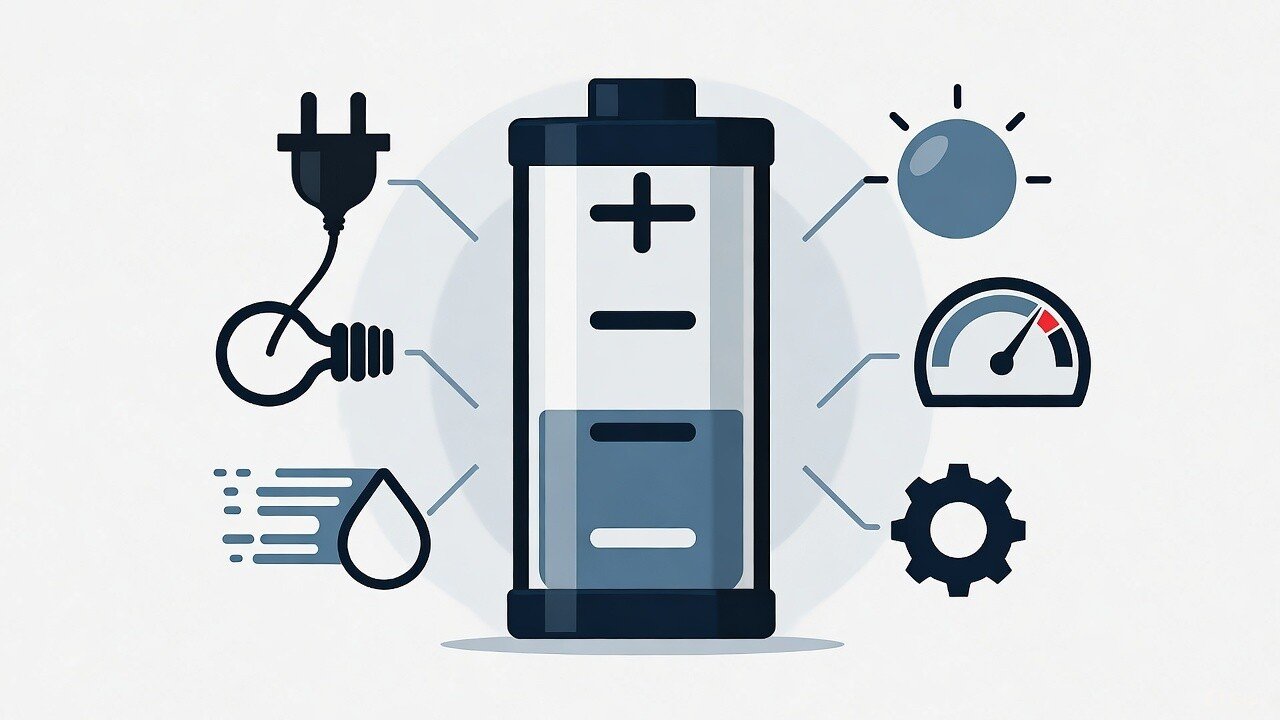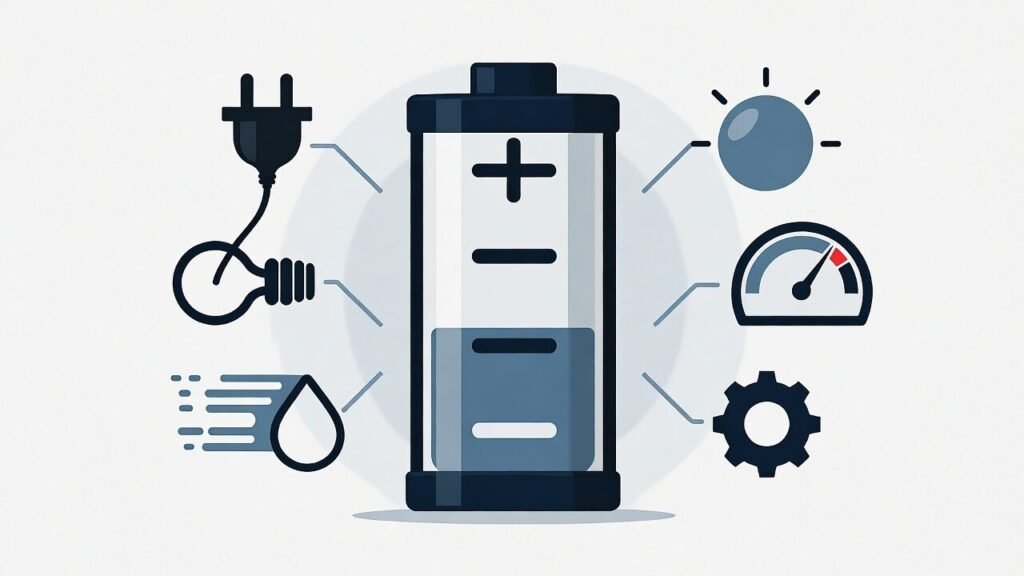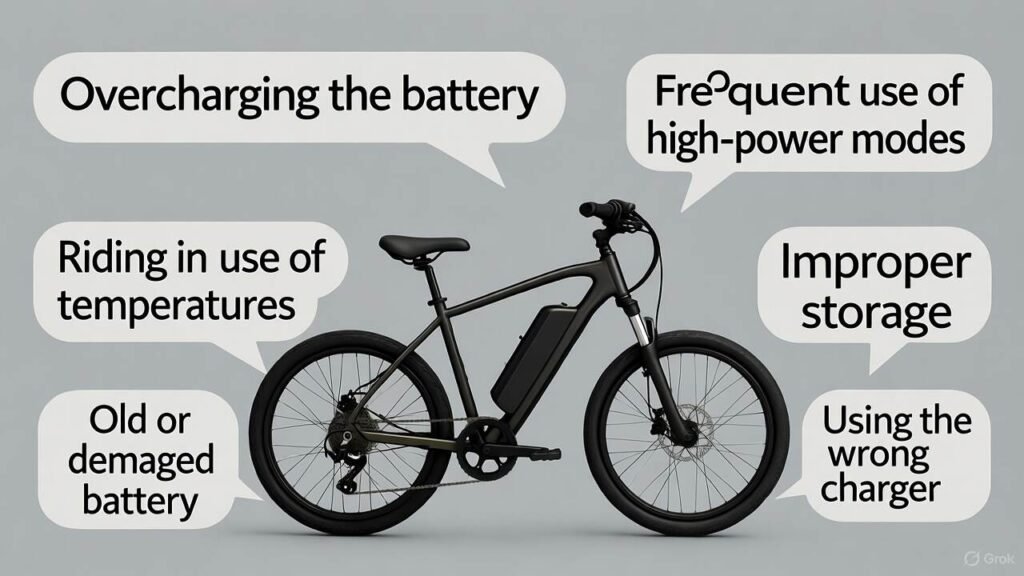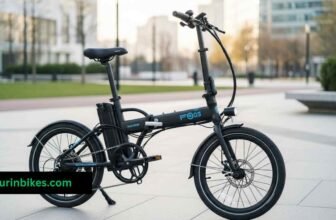
There’s nothing more frustrating than setting off on your electric bike, fully charged and ready to go, only to watch your battery bars plummet after just a few miles. If you’re constantly asking, “Why is my electric bike battery draining so fast?” you’re not alone. This is one of the most common e-bike battery problems riders face.
Your e-bike’s battery is its heart and most expensive component. Understanding why it might be failing prematurely is key to restoring your bike’s performance and avoiding a costly replacement. This comprehensive guide will walk you through the common culprits, teach you how to diagnose the issue, and provide actionable tips to get you back on the road with confidence.
Common Reasons for Fast Battery Drain in Electric Bikes
A rapidly draining battery can stem from a variety of issues, from simple habits to complex internal failures. Let’s explore the most frequent causes.
1. Age and Natural Battery Degradation
Like the battery in your smartphone or laptop, e-bike batteries have a finite lifespan. Most lithium-ion batteries are rated for 500 to 1000 full charge cycles. A “cycle” is one full discharge from 100% to 0%. Over time, this natural battery degradation leads to a reduced capacity, meaning a full charge won’t take you as far as it used to. If your bike is several years old, this is the most likely cause.
2. Improper Charging Habits
How you charge your battery plays a huge role in its health.
- Constant 100% Charging: Keeping your battery plugged in at 100% for extended periods (days or weeks) puts significant stress on the cells.
- Frequent Deep Discharges: Regularly running your battery down to 0% before recharging can also accelerate wear.
- Using the Wrong Charger: Always use the charger provided by the manufacturer. An incompatible charger can damage the battery’s internal management system.
3. Extreme Weather Conditions
Lithium-ion batteries are sensitive to temperature.
- Cold Weather: Battery chemistry slows down in the cold, temporarily reducing its capacity and range. You might see a 20-30% reduction on a very cold day.
- Hot Weather: Storing or charging your battery in direct sunlight or a hot car can cause permanent damage and accelerate long-term battery degradation.

4. Riding Conditions and Habits
Your riding style has a direct impact on battery consumption.
- High Power Assist Levels: Consistently using the highest assist level (e.g., Turbo or Sport) will drain the battery much faster than eco mode.
- Hilly Terrain: Frequent climbing requires a massive power draw from the motor, consuming battery life rapidly.
- Frequent Stop-and-Go: Accelerating from a standstill uses more power than maintaining a constant speed.
- Heavy Loads: Carrying heavy cargo or riding at a high total weight (rider + gear) forces the motor to work harder.
- Under-Inflated Tires: Soft tires create more rolling resistance, which your motor and battery have to overcome.
5. Mechanical Drag
Sometimes, the issue isn’t the battery at all. If your brakes are rubbing against the rotors or your wheel bearings are seized, it creates constant drag. Your motor has to use extra battery power just to overcome this friction, making it feel like the battery is dying quickly.
6. A Faulty or Damaged Battery
Internal issues like faulty or damaged battery cells, a failing Battery Management System (BMS), or physical damage from a drop or impact can lead to rapid power loss and an inability to hold a charge.
How to Test Your E-Bike Battery
Before you assume the worst, you can perform some basic diagnostic checks at home. Here’s how to test your e-bike battery with a simple tool: a multimeter.
Disclaimer: Always handle your battery with care. If you are uncomfortable, seek help from a professional.
What You’ll Need: A digital multimeter.
Steps to Test E-Bike Battery with Multimeter:
- Fully Charge the Battery: Charge your battery completely to ensure you’re testing its maximum voltage.
- Set Your Multimeter: Turn the dial to the DC Voltage (V-) setting. Choose a range higher than your battery’s rated voltage (e.g., for a 36V battery, use the 200V setting).
- Locate the Terminals: Find the main positive and negative output terminals on your battery. They are often marked or color-coded. Do not touch the charging port with the probes.
- Test the Voltage: Touch the red (positive) probe to the positive terminal and the black (negative) probe to the negative terminal.
- Read the Results:
- A healthy 36V battery should read between 41V – 42V when fully charged.
- A healthy 48V battery should read between 54V – 54.6V when fully charged.
- If the voltage is significantly lower than expected (e.g., a 48V battery reading 45V), it indicates a serious problem with the battery’s ability to hold a charge.
For a more thorough test, you can check the voltage under load (while riding), but this requires more advanced tools. A simple multimeter test is a great first step in diagnosing general battery health.

How to Reset Your E-Bike Battery
Sometimes, the issue is not the battery cells themselves but the Battery Management System (BMS)—the computer that manages them. If the BMS becomes miscalibrated, it can give incorrect readings on your display. Performing a reset can often solve this.
Warning: This process varies by manufacturer. Check your user manual for specific instructions.
General E-Bike Battery Reset Procedure:
- Turn Off the Bike: Ensure the bike and display are completely powered off.
- Disconnect the Battery: Remove the battery from the bike frame.
- Press and Hold the Power Button: With the battery disconnected, press and hold the power button on the battery itself (if it has one) for about 30 seconds. This can discharge any residual power in the capacitors and reset the BMS.
- Reconnect and Recharge: Reconnect the battery to the bike and plug it into the charger. Allow it to charge to 100% without interruption.
This “soft reset” can recalibrate the BMS, giving you a more accurate battery level reading and potentially restoring some performance.
Signs Your Battery Needs Replacement
Testing and resetting can fix software glitches, but sometimes a hardware replacement is unavoidable. Look for these warning signs:
- Drastic Reduction in Range: You used to get 40 miles per charge, but now you’re struggling to reach 15, even with ideal riding conditions.
- The “Full but Empty” Paradox: The battery indicator shows a full charge but drops to one bar or empty after just a few minutes of riding.
- Physical Damage or Swelling: Any bulging, cracking, or leaking from the battery case is a major red flag. Stop using it immediately, as it can be a fire hazard.
- Failure to Charge: The battery won’t accept a charge, or the charger light flickers abnormally without completing a cycle.
- Sudden Power Cut-Offs: The bike loses power abruptly, even when the display shows remaining charge.
Tips to Extend Your E-Bike Battery Life
Prevention is the best medicine. Follow these best practices to extend your e-bike battery life:
- Charge Smart: Try to keep your battery between 20% and 80% charge for daily use. Only charge to 100% if you’re going on a long ride immediately after.
- Store Correctly: For long-term storage (over a month), charge the battery to about 60% and store it in a cool, dry place away from direct sunlight.
- Avoid Temperature Extremes: Never leave your battery in a freezing car overnight or in a scorching hot trunk during the day.
- Keep It Clean and Dry: Wipe down the battery case and terminals regularly to prevent corrosion.
- Use the Right Assist Level: Use a lower power assist level (like Eco) whenever possible to reduce strain on the battery.
Conclusion
Dealing with a fast-draining e-bike battery can be frustrating, but it’s often a solvable problem. By understanding the common causes of battery drain, from simple riding habits to complex cell failure, you can effectively troubleshoot the issue. Start with the simple fixes: check your tire pressure, adjust your riding style, and try a battery reset.
If problems persist, use a multimeter to test your e-bike battery health. This e-bike battery troubleshooting process will give you a clear idea of whether you need to change your habits or start shopping for a new battery.
Remember, your battery is an investment. Proper care and maintenance are the keys to maximizing its lifespan and ensuring you enjoy every mile of your ride.
Is your battery problem persisting? It might be time for a professional diagnosis. Visit your local e-bike specialist for a comprehensive battery health check.
Why does my e-bike battery show full but drain fast?
This is a classic sign of either a miscalibrated BMS (fixable with a reset) or significant battery cell degradation (requiring replacement). The BMS thinks the battery is full, but the actual capacity is much lower.
Can I test my e-bike battery at home?
Yes, you can perform a basic voltage test with a multimeter, as described above. For a full capacity test under load, a bike shop has specialized equipment.
How often should I reset or calibrate my e-bike battery?
There’s no set schedule, but doing a full discharge/recharge cycle (from 100% to 0% and back to 100%) once every 30-40 charges can help keep the BMS accurately calibrated.
What tools do I need to test an e-bike battery?
A digital multimeter is the primary battery testing tool for a basic home diagnosis.
Meet Sachin Kumar, an avid cyclist and bike enthusiast with a passion for two-wheeled adventures. At our Turinbikes site, Sachin shares expert insights, thrilling ride experiences, and tips for fellow bike lovers.






